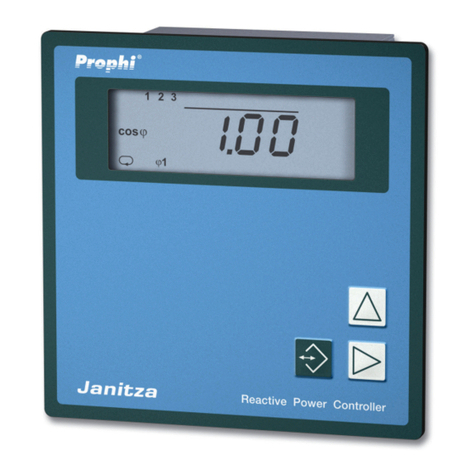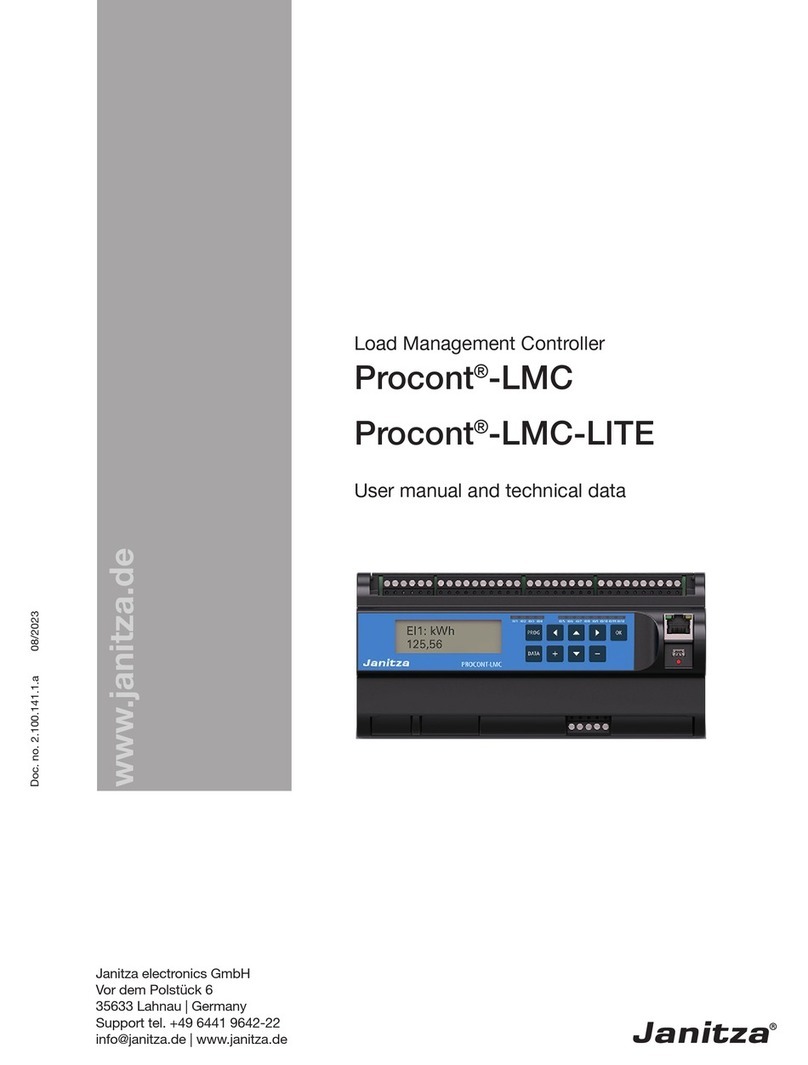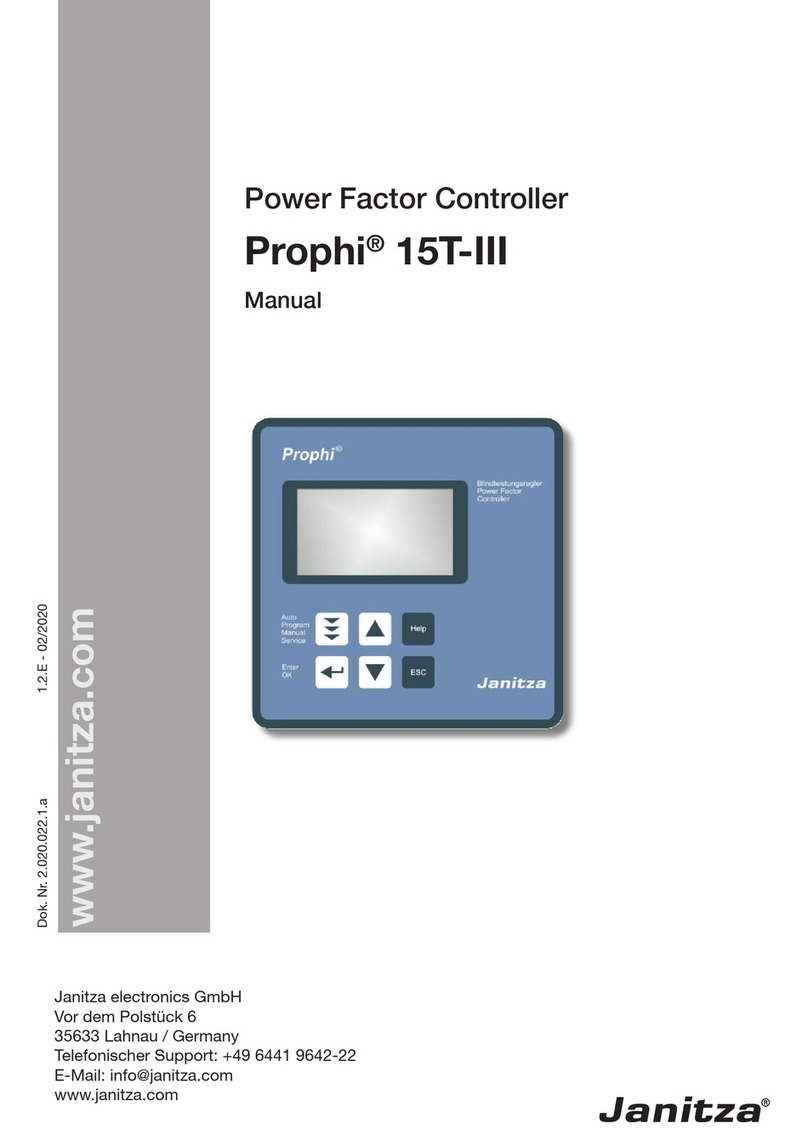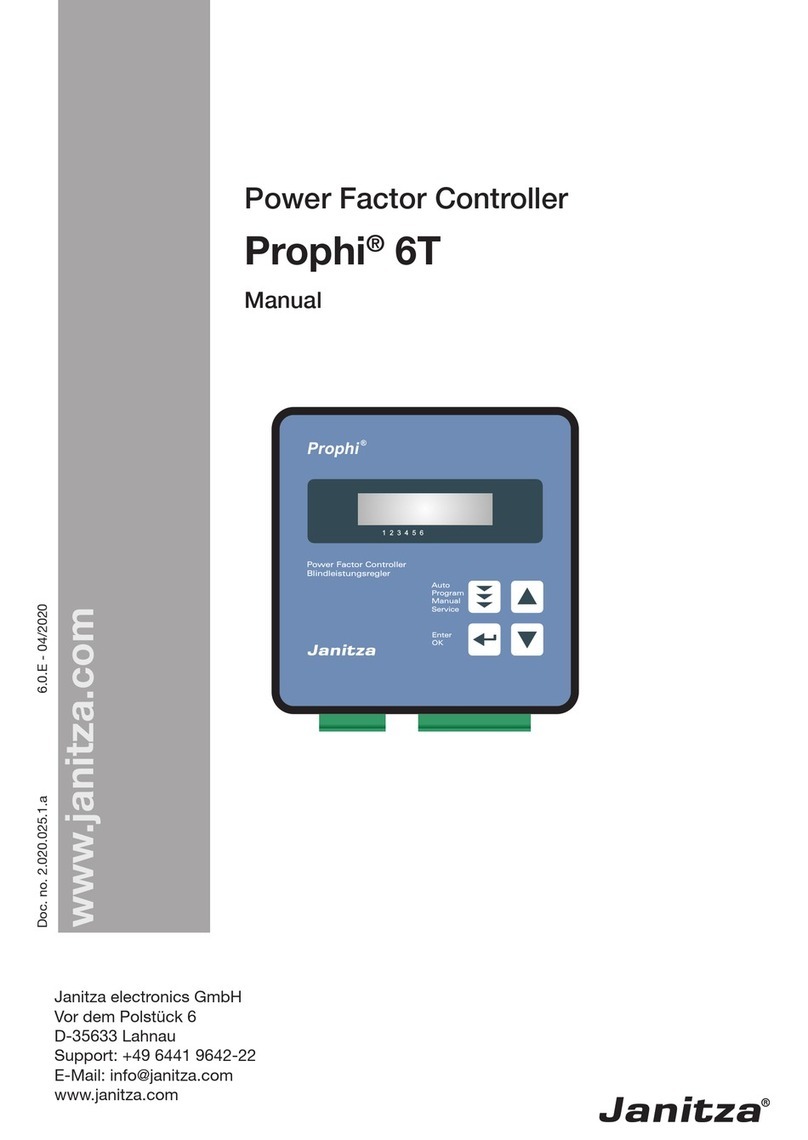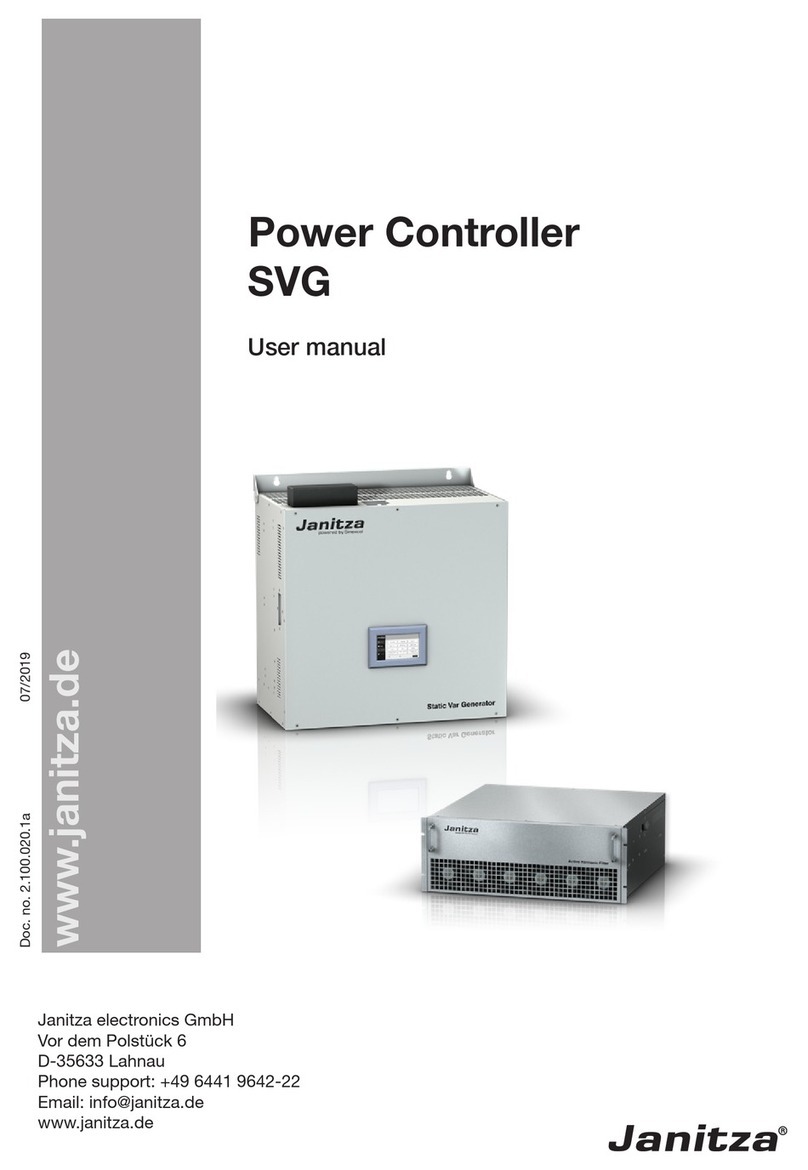
Prophi®12R / 12 RS
4
Section1 General
The power factor controller Prophi 12 (single phase) enlarges the product range of power
factor control devices by a useful combination of the well known features with the
advantages of a better visualization.
The big graphic display enables a user-friendly programming and gives further benefits
such as larger display in the Display-mode and the display of various parameters in
bargraph-mode.
With the additional “ESCAPE”-button a backward navigation in all menus is possible.
The “HELP”-button allows an interactive help in the particular menu item
(German/English).
The controller is characterized by its user friendly operating interface via menu driven
plain text display. The display of several grid parameters, the storage of different values
as well as the possibility of test run allow a simple error analysis and system monitoring.
If required, an automatic initialization is possible which reduces the start-up operation to
a minimum.
R 12 respectively 13 switching outputs
RExtended supply-voltage range 110...440V
R20 pre-programmed control series with self optimized intelligent control behavior
RControl series editor for individual control series
ROperation and display completely menu-driven
RIlluminated graphic display 128 x 64 dots
R4 quadrant operation
RAutomatic initialization possible
RDisplay of several grid parameters also in large letters
RDisplay of harmonics of voltage and current, also as bar diagram
RDisplay and monitoring of temperature
RMonitoring of the particular capacitor output
RStorage of maximum values of grid parameters as well as switching operations
and switch-in times of particular capacitor contactors
RManual/automatic operation
RProgramming of fixed steps or skipping of single outputs possible
RZero voltage switch off
RError display of different states and alarm output (relay)
RError storage
RTest run of the system with error analysis
RPanel-mounted instrument 144 x 144 x 53 mm
RFirmware update possible
Version with interface only:
Radditional external input (function programmable), e.g. for 2nd parameter set
Radditional freely programmable alarm relay, e.g. for fan, status notification
Rserial interface RS485, for controller coupling, integration into networks
Rvisualization, programming and data processing via PC by enclosed software
RParameterization of the controller via PC
RUsage as system interface
RUsage with accessory MMI6000/MMI7000 for real current or remote measuring
RConnection of system accessory (e.g. datalogger)






